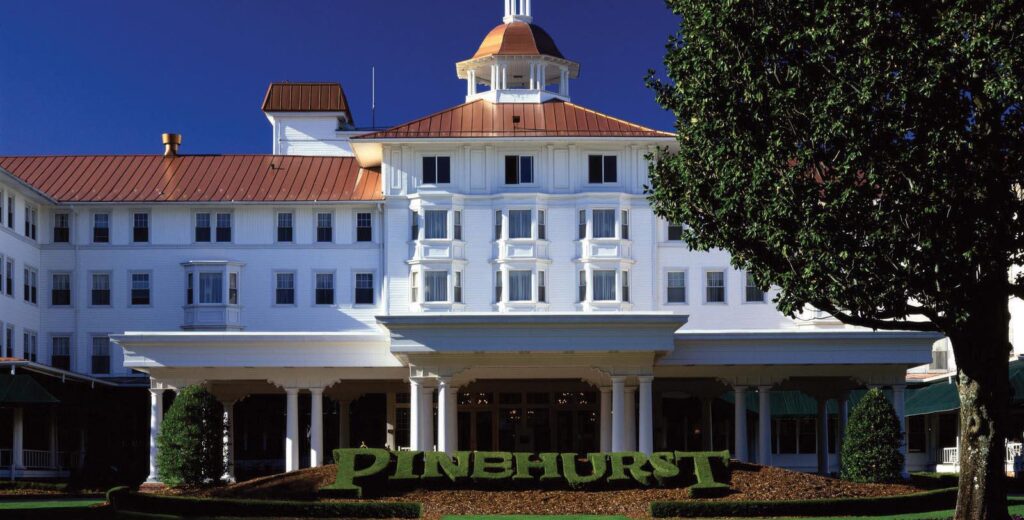
During a recent stay in Pinehurst, North Carolina, we experienced the highs and lows of restaurant wine programs. One restaurant nailed it, a second proffered near-lethal food and wine pairings, and a third served their wine improperly. That caused us to ponder what makes a good restaurant wine program.
- Our yardstick: the late Sandy Bloch, Master of Wine, created a superb restaurant wine program at Boston’s Legal Seafoods. He personally selected wines at a wide range of price points that paired well with his menu items and trained his staff to serve wine properly. If you’re twenty years old and on a first date, you can find a nice, affordable wine. And if you just closed a billion-dollar deal and want to celebrate, he had you covered. And everything in between.
- Finding a restaurant featuring great food and a sensible, well-priced wine list is harder than you might think. Sure, numerous restaurants have award-winning wine programs and celebrity chefs, but you may need to take out a mortgage to pay for your dinner. More commonly, wine lists are more focused on revenue generation than customer satisfaction.
The “treasure” of our Pinehurst experience was Lisi Italian restaurant. It goes without saying that the food was great. Over numerous visits, we’ve had just about every dish on the menu and love them all. But what makes Lisi special is a thoughtful, reasonably priced wine list. Whatever your wine preference, you’ll likely find a bottle that will complement your meal.
- The owner knows his wines, and his philosophy is to make good wines affordable for his customers. Sandy Block would approve.
- You can also confidently select a wine by the glass and know that it’s fresh. Far too many restaurants serve foul tasting, oxidized wines from bottles that have been open too long. To understand how much this matters, pour a glass of wine and let it sit out at room temperature for a couple of days, and notice how the aroma and taste have changed. If you detect that at a restaurant—send the glass back.
- Not surprisingly, Lisi has won the Wine Spectator “Award of Excellence.”
The “train wreck” restaurant featured a sommelier-guided wine dinner which demonstrated how poor wine pairings can make both the wine and the food suffer. We’ll withhold the name to protect the guilty, but take a look at what went wrong.
- The dinner opened with a high alcohol wine paired with a dish featuring a fiery chili. Because alcohol exacerbates spicy heat, the result was a three-alarm fire in our mouths that ruined the food, the wine, and subsequent courses. If you’re pairing a wine with a spicy hot dish, use a lower alcohol, off-dry wine, such as German Riesling – the sweetness will counterbalance moderate levels of spicy heat.
- The dinner closed with an excellent berry cheesecake paired with a nice dry wine, but the combination was bitter and almost unpalatable. Wine should always be as sweet as the food that it’s served with. So, if the cheesecake was to be the star, it should have been served with a sweet dessert wine. Or, if the wine was to be the focus, it could have been paired with a cheese course.
Temperature matters. Our third restaurant had good food and a limited, but adequate, wine list. Unfortunately, they served their wines at room temperature, which happened to be about 76 degrees. The result was that our Bordeaux blend red seemed unpleasantly alcoholic and jammy. We asked the waiter to put the wine in an ice bucket for 15 minutes, and once cooled to a proper temperature it seemed like an entirely different, and very pleasant, wine.
What to make of all this? First, by following a few basic strategies you’ll almost always get pleasant pairings. And serving wine at the proper temperature really matters. Finally, if you’re considering a new restaurant, check to see if their wine list is on their website. If you see a four or five times markup – go somewhere else.
Cheers!

Great job Jim! It’s amazing how few people get a chance to experience wine properly without guidance. Keep up the good work, Fred
Great review!